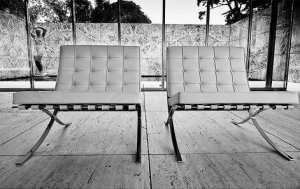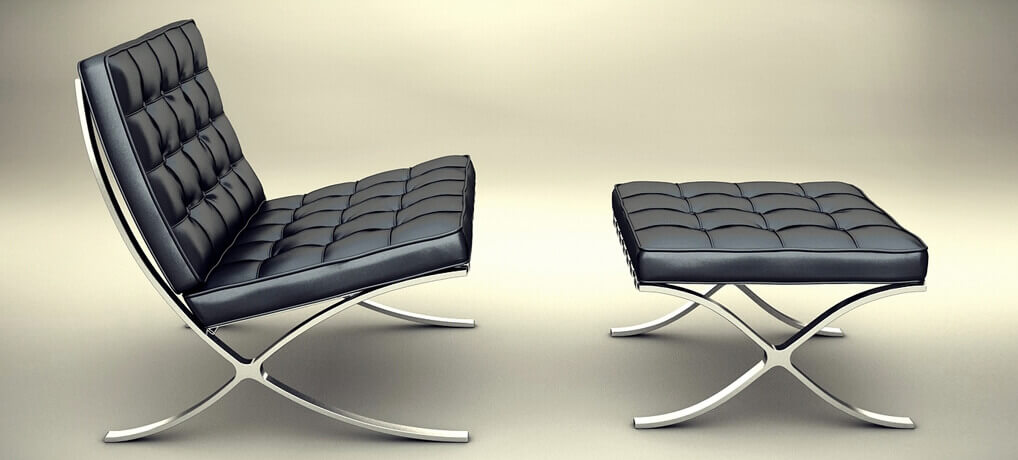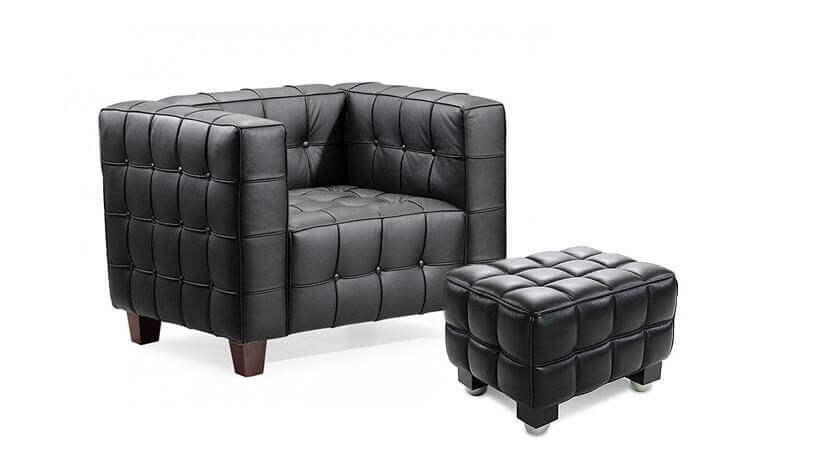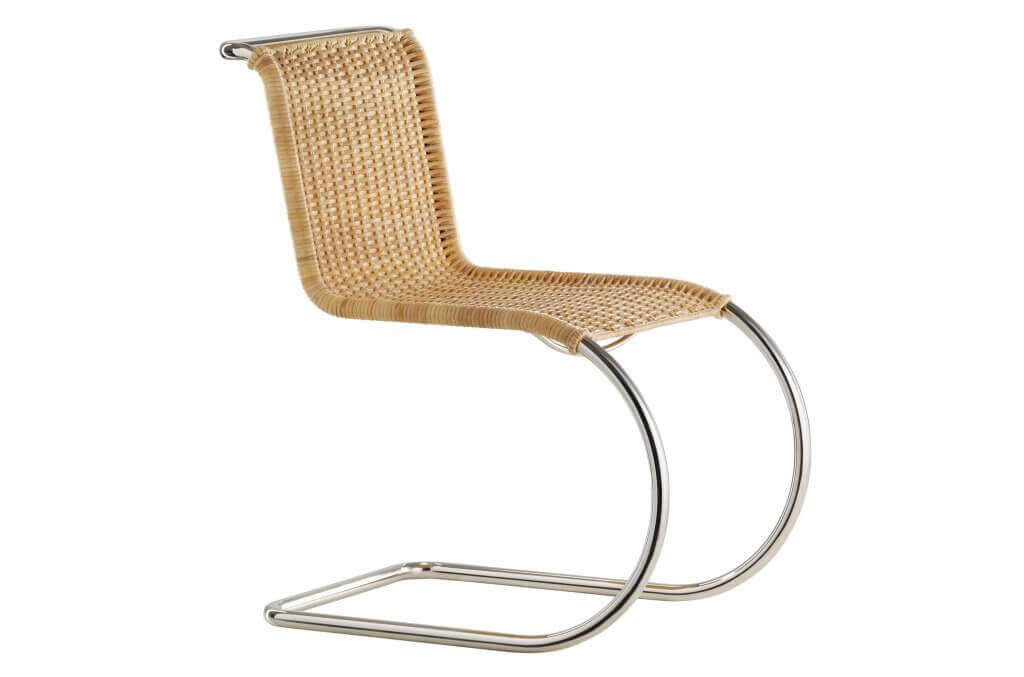Lilly Reich: Vanguard and Innovative

Are you familiar with Lilly Reich and her incredible work? She created her designs with true originality. Reich broke free from traditional decor and paves new opportunities, bringing intriguing ideas into the world of interior design. Let’s take a closer look at what her work is about: vanguard and innovation.
The German designer offers an international decor style. As a world designer, she creates rational settings that share similarities with those of Ludwig Mies van der Rohe and Le Corbusier. In short, her decor style is quite akin to the Bauhaus style.
Her work ultimately makes it easier for interior designers to pull a room together. It adds modernity and straight-forward shapes– two elements that are very characteristic of the 20th century— to a setting. In our post today, we’ll learn about who she is and the most exemplary pieces of her work.
A bit of history…

Lilly Reich was a multi-disciplinary artist who has made her talents crystal clear to the world of interior design. She had plenty of experience in the world of German and Austrian Art in addition to having the privilege of knowing the important architects and interior designers of Europe.
Until 1908, Reich learned alongside Josef Hoffman in his studio. She soon dived into German Interior Design and unfolded all of the possibilities that Vanguard held in store for her.
In 1926, she met Mies van der Rohe, who was a key social contact for her career. She didn’t only learn about his work, but she also worked with him and later received an invitation to teach at the Bauhaus. Mies also helped Reich establish contacts in the United States, which allowed her to discover the architecture in Chicago– a place that would spark wonder.
Lilly Reich is a role model for her work and dedication in Interior Design.
Lilly Reich: expositions and work

As we mentioned above, knowing Mies van der Rohe completely changed the course of Reich’s career. The connection led to various joint efforts and works and Mies helped her with expositions as well. Let’s look over some examples:
- The 1927 Weissenhof Estate modern colonies exposition in Stuttgart is a prime example. The project showcased various reputable elements that had an exceptional visual appeal and were very characteristic of the Bauhaus.
- Reiche also participated in the construction of the different buildings of the Weissenhof in 1927.
- She also participated in the 1928 Barcelona International Exposition, boasting much more professionalism thanks to the experience she gained in the previous year. In the 1928 Exposition, Reich presented the Barcelona chair, which was a project that Mies, of course, impacted as well.
- Later that year, both designers worked on the Villa Tugendhat in Brno (Czech Republic). Reich headed the interior design and collaborated with the lead architect to plan the layout.
Mies van der Rohe and Lilly Reich unquestionably made an amazing team.
Kubus chair

When we stop to analyze Reich’s work, we have to remember that her designs are intertwined with other artists. The Kubus chair, for example, was created with Josef Hoffman for a 1908 Vienna Secession decor style.
The chair uses straight lines, creating firmness and stability. Though bulky, it has a defined, pure form and highlights its shape with upholstered detail.
The designers aimed for creating comfort alongside elegance and well-being.
Lilly Reich: Weissenhof chair

Created in 1927, the Weissenhof chair features the design that most closely follows Mies van der Rohe’s direction. In other words, it aims for rationalism and dynamism through the use of curved lines.
The chair aims first and foremost to offer functionality and simplicity. It doesn’t need to complicate its design with complex lines and appearance.
Lilly Reich’s work goes hand-in-hand with Vanguard design and creativity.
Are you familiar with Lilly Reich and her incredible work? She created her designs with true originality. Reich broke free from traditional decor and paves new opportunities, bringing intriguing ideas into the world of interior design. Let’s take a closer look at what her work is about: vanguard and innovation.
The German designer offers an international decor style. As a world designer, she creates rational settings that share similarities with those of Ludwig Mies van der Rohe and Le Corbusier. In short, her decor style is quite akin to the Bauhaus style.
Her work ultimately makes it easier for interior designers to pull a room together. It adds modernity and straight-forward shapes– two elements that are very characteristic of the 20th century— to a setting. In our post today, we’ll learn about who she is and the most exemplary pieces of her work.
A bit of history…

Lilly Reich was a multi-disciplinary artist who has made her talents crystal clear to the world of interior design. She had plenty of experience in the world of German and Austrian Art in addition to having the privilege of knowing the important architects and interior designers of Europe.
Until 1908, Reich learned alongside Josef Hoffman in his studio. She soon dived into German Interior Design and unfolded all of the possibilities that Vanguard held in store for her.
In 1926, she met Mies van der Rohe, who was a key social contact for her career. She didn’t only learn about his work, but she also worked with him and later received an invitation to teach at the Bauhaus. Mies also helped Reich establish contacts in the United States, which allowed her to discover the architecture in Chicago– a place that would spark wonder.
Lilly Reich is a role model for her work and dedication in Interior Design.
Lilly Reich: expositions and work

As we mentioned above, knowing Mies van der Rohe completely changed the course of Reich’s career. The connection led to various joint efforts and works and Mies helped her with expositions as well. Let’s look over some examples:
- The 1927 Weissenhof Estate modern colonies exposition in Stuttgart is a prime example. The project showcased various reputable elements that had an exceptional visual appeal and were very characteristic of the Bauhaus.
- Reiche also participated in the construction of the different buildings of the Weissenhof in 1927.
- She also participated in the 1928 Barcelona International Exposition, boasting much more professionalism thanks to the experience she gained in the previous year. In the 1928 Exposition, Reich presented the Barcelona chair, which was a project that Mies, of course, impacted as well.
- Later that year, both designers worked on the Villa Tugendhat in Brno (Czech Republic). Reich headed the interior design and collaborated with the lead architect to plan the layout.
Mies van der Rohe and Lilly Reich unquestionably made an amazing team.
Kubus chair

When we stop to analyze Reich’s work, we have to remember that her designs are intertwined with other artists. The Kubus chair, for example, was created with Josef Hoffman for a 1908 Vienna Secession decor style.
The chair uses straight lines, creating firmness and stability. Though bulky, it has a defined, pure form and highlights its shape with upholstered detail.
The designers aimed for creating comfort alongside elegance and well-being.
Lilly Reich: Weissenhof chair

Created in 1927, the Weissenhof chair features the design that most closely follows Mies van der Rohe’s direction. In other words, it aims for rationalism and dynamism through the use of curved lines.
The chair aims first and foremost to offer functionality and simplicity. It doesn’t need to complicate its design with complex lines and appearance.
Lilly Reich’s work goes hand-in-hand with Vanguard design and creativity.
All cited sources were thoroughly reviewed by our team to ensure their quality, reliability, currency, and validity. The bibliography of this article was considered reliable and of academic or scientific accuracy.
- Dachs, Sandra; García Hintze, Laura; de Muga, Patricia: Mies van der Rohe: muebles y objetos, Barcelona, Polígrafa, 2010.
- Droste, Magdalena: Bauhaus. 1919-1933, Berlín, Taschen, 1990.







